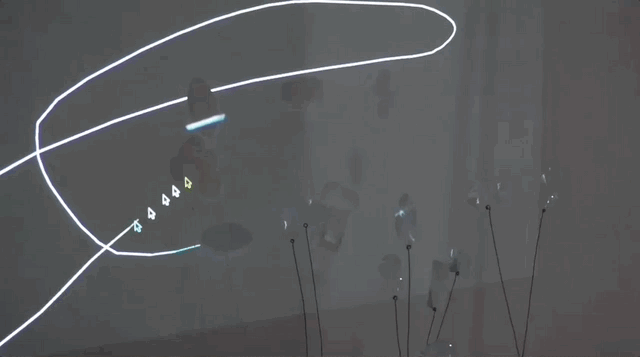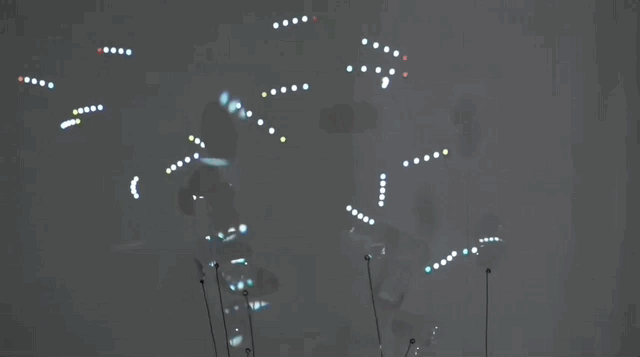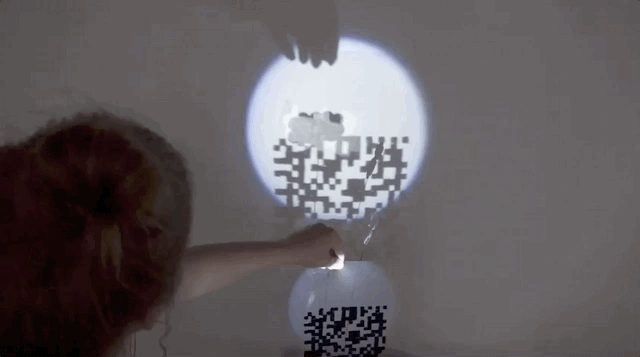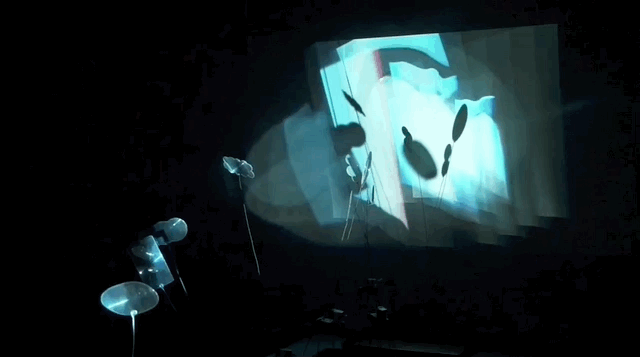Katherine Rae Diemert (k.d.rae) is a visual artist based out of Hamilton, Canada. She makes art that explores our relationship to the natural and digital worlds. You can reach her at kdiemert@gmail.com.
Rogue Pixels
Spring 2020
Video Projection, Mechanisms, Lenticular Lens, Film Canisters
Developed during residency at The Factory Media Centre, exhibited online as part of *And Now.
︎︎︎ Documentation of installation in motion, Factory Media Centre, Hamilton, ON Canada, Spring 2020
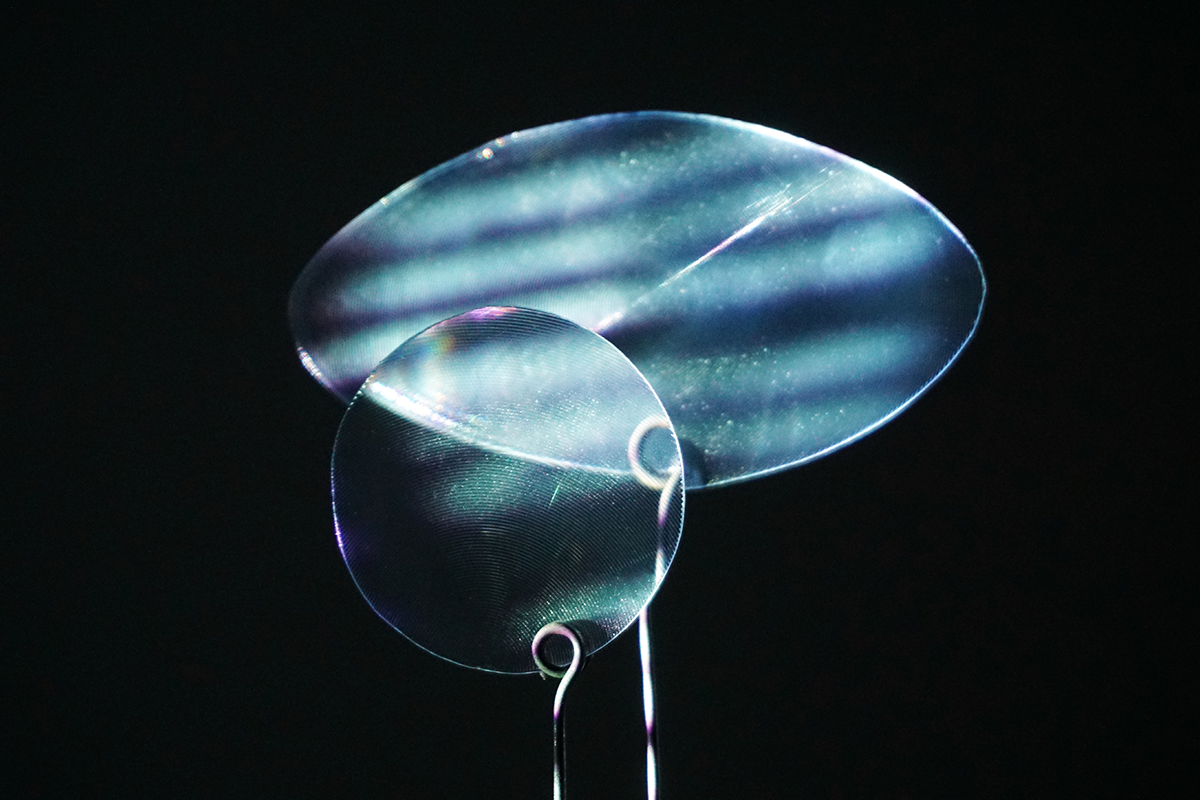
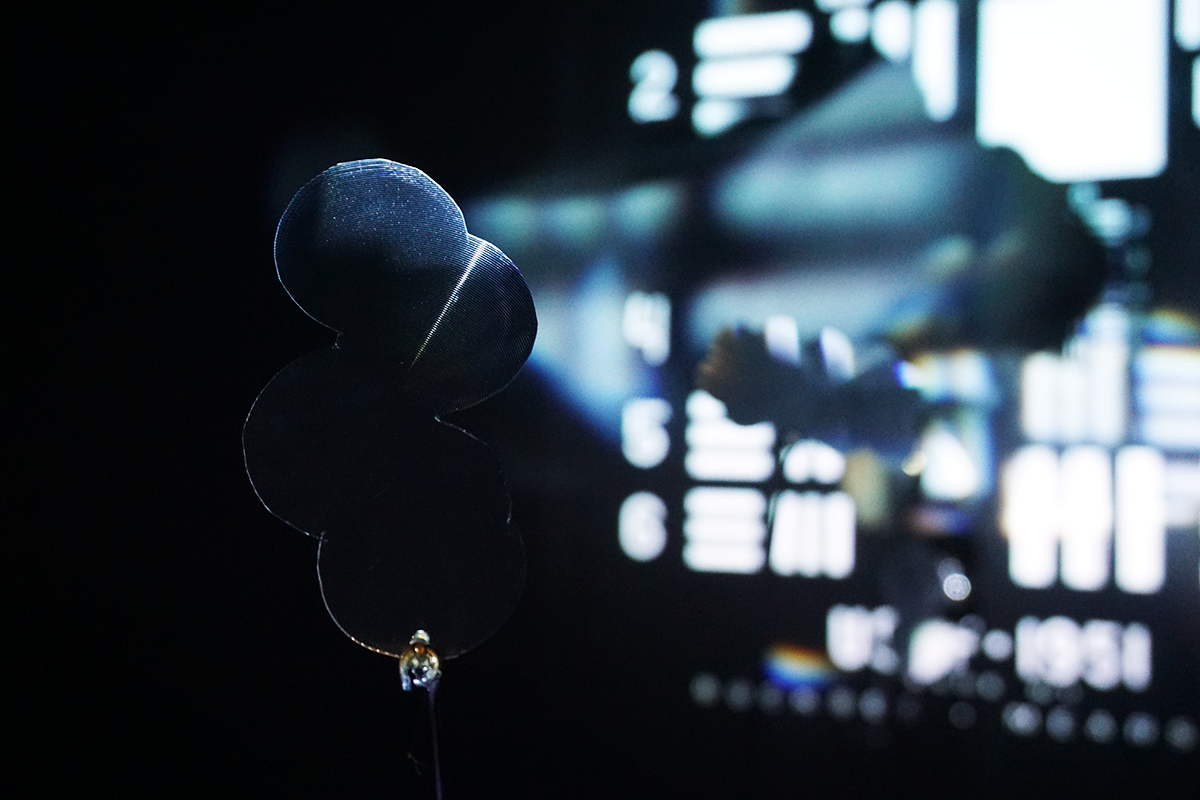
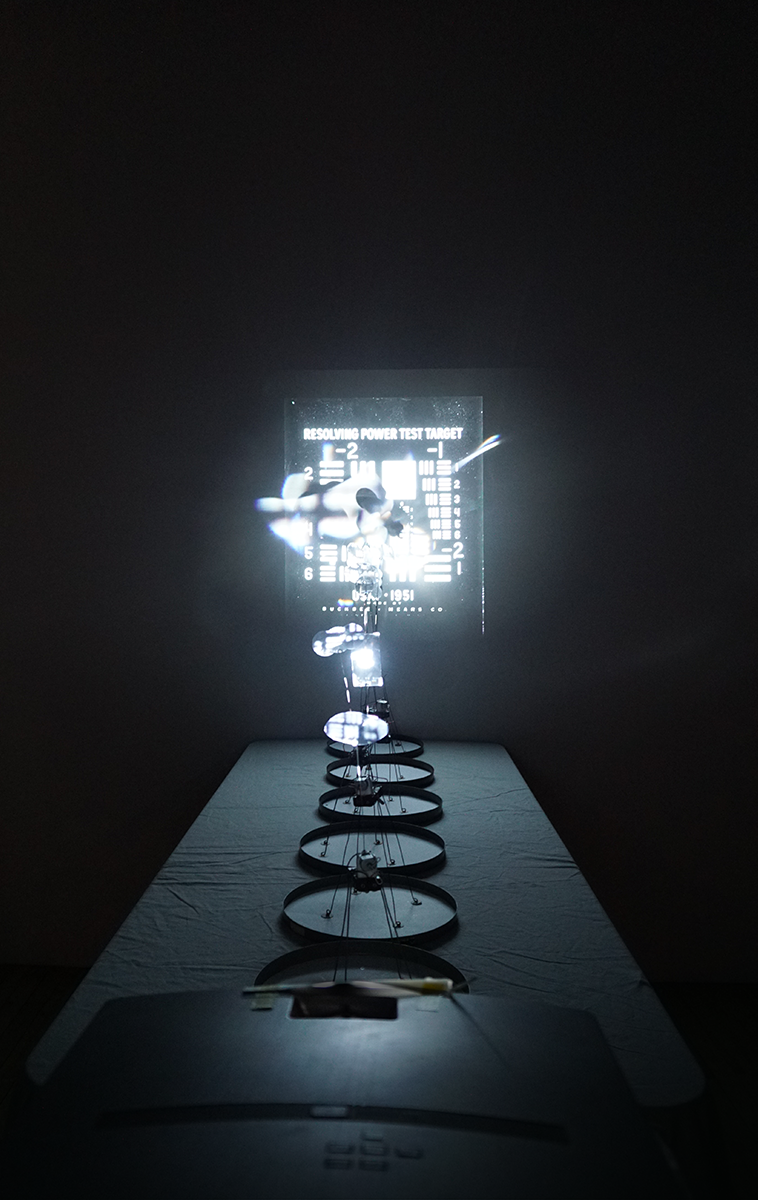
Rogue Pixels is an installation using handmade mechanism “pixels” standing in the beam of a video projector’s light, which displays a resolution chart from the 1950s. The lenses magnify and refract the light, causing distortions in the resulting image and casting light out of the image’s bounds and onto the surrounding walls. Rogue Pixels references Hito Steyerl’s How Not to be Seen: A Fucking Didactic Educational .MOV File (2013) , through both the resolution targets as well as the idea of a ‘rogue pixel’ introduced in her video.
Each of the six mechanisms contain a small, off-set motor and battery pack, held up by a wire armature of four legs and one to two antennas to which lenticular lenses are attached. The motor’s off-set rotation creates a vibration, which causes the entire mechanism to jitter and move on its feet. Each stands in half of a circular film canister placed on the table, allowing a small range of movement within the projector’s line of sight. As the mechanisms vibrate and move, the lenticular lenses magnify and refract the light of the projected image in different ways, depending on their angle and distance from the projector. The vibration of the lenses, their wires, and even the motor’s spinning shafts, make the projector’s own rotating colour discs visible, separating the red, green, and blue colour channels. When I began drawing and building these creatures I didn’t have a clear idea of what they were supposed to be, but somewhere in the process I began thinking of them as pixels.
Previously, I had been thinking about the notion of “light as communication”, and examples of this in technology. When we look at digital images on screens, we’re seeing thousands of individual pixels casting light at specific frequencies, to together compile an image. As screens became more and more high-resolution, pixels diminished in scale and multiplied. Now, you can’t really see an individual pixel on a high-end monitor. The notion of a “rogue pixel” comes from Hito Steyerl’s How Not to be Seen. A satirical short film that illustrates various ways of “becoming invisible”, it touches on image-making processes and surveillance strategies. The mechanisms I was making, which were wandering little chaotic creatures, and their light-bending lenses, felt in-keeping with Stereyl’s idea.
I knew I wanted them to interact with light, but didn’t have any specific subjects initially. I tried a variety of different videos and images, finding that black and white produced the most interesting results. Then I remembered resolution targets from Steyerl’s work. Resolution targets were used in analogue photography for determining the visibility of an image, and to calibrate whatever machine was taking the photograph, both at a human-scale and in satellite photographs. In Stereyl’s film rogue pixels are portrayed by human’s in bodysuits with boxes for heads, “hid[ing] in the cracks of old standards of resolution. They throw off the cloak of representation”. Here they’re treated still a part of technology, but given a kind of agency and independence from their usual environment. Setting them loose in front of a resolution target that determined and constricted their scale seems only right.
Each of the six mechanisms contain a small, off-set motor and battery pack, held up by a wire armature of four legs and one to two antennas to which lenticular lenses are attached. The motor’s off-set rotation creates a vibration, which causes the entire mechanism to jitter and move on its feet. Each stands in half of a circular film canister placed on the table, allowing a small range of movement within the projector’s line of sight. As the mechanisms vibrate and move, the lenticular lenses magnify and refract the light of the projected image in different ways, depending on their angle and distance from the projector. The vibration of the lenses, their wires, and even the motor’s spinning shafts, make the projector’s own rotating colour discs visible, separating the red, green, and blue colour channels. When I began drawing and building these creatures I didn’t have a clear idea of what they were supposed to be, but somewhere in the process I began thinking of them as pixels.
Previously, I had been thinking about the notion of “light as communication”, and examples of this in technology. When we look at digital images on screens, we’re seeing thousands of individual pixels casting light at specific frequencies, to together compile an image. As screens became more and more high-resolution, pixels diminished in scale and multiplied. Now, you can’t really see an individual pixel on a high-end monitor. The notion of a “rogue pixel” comes from Hito Steyerl’s How Not to be Seen. A satirical short film that illustrates various ways of “becoming invisible”, it touches on image-making processes and surveillance strategies. The mechanisms I was making, which were wandering little chaotic creatures, and their light-bending lenses, felt in-keeping with Stereyl’s idea.
I knew I wanted them to interact with light, but didn’t have any specific subjects initially. I tried a variety of different videos and images, finding that black and white produced the most interesting results. Then I remembered resolution targets from Steyerl’s work. Resolution targets were used in analogue photography for determining the visibility of an image, and to calibrate whatever machine was taking the photograph, both at a human-scale and in satellite photographs. In Stereyl’s film rogue pixels are portrayed by human’s in bodysuits with boxes for heads, “hid[ing] in the cracks of old standards of resolution. They throw off the cloak of representation”. Here they’re treated still a part of technology, but given a kind of agency and independence from their usual environment. Setting them loose in front of a resolution target that determined and constricted their scale seems only right.
PROCESS WORK
